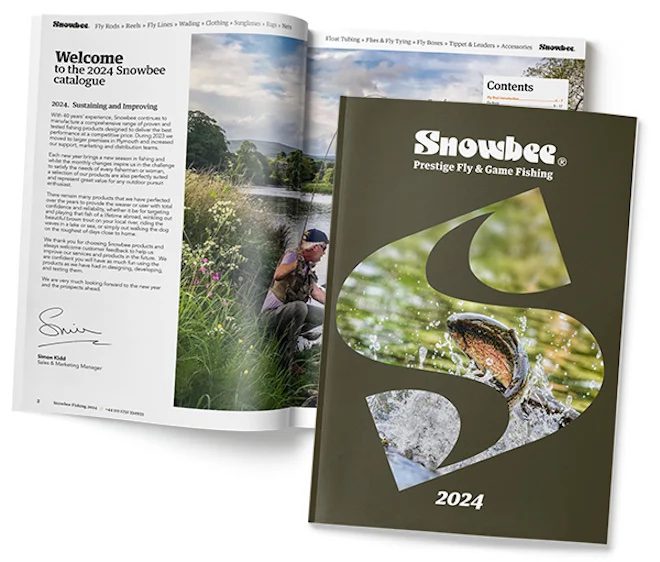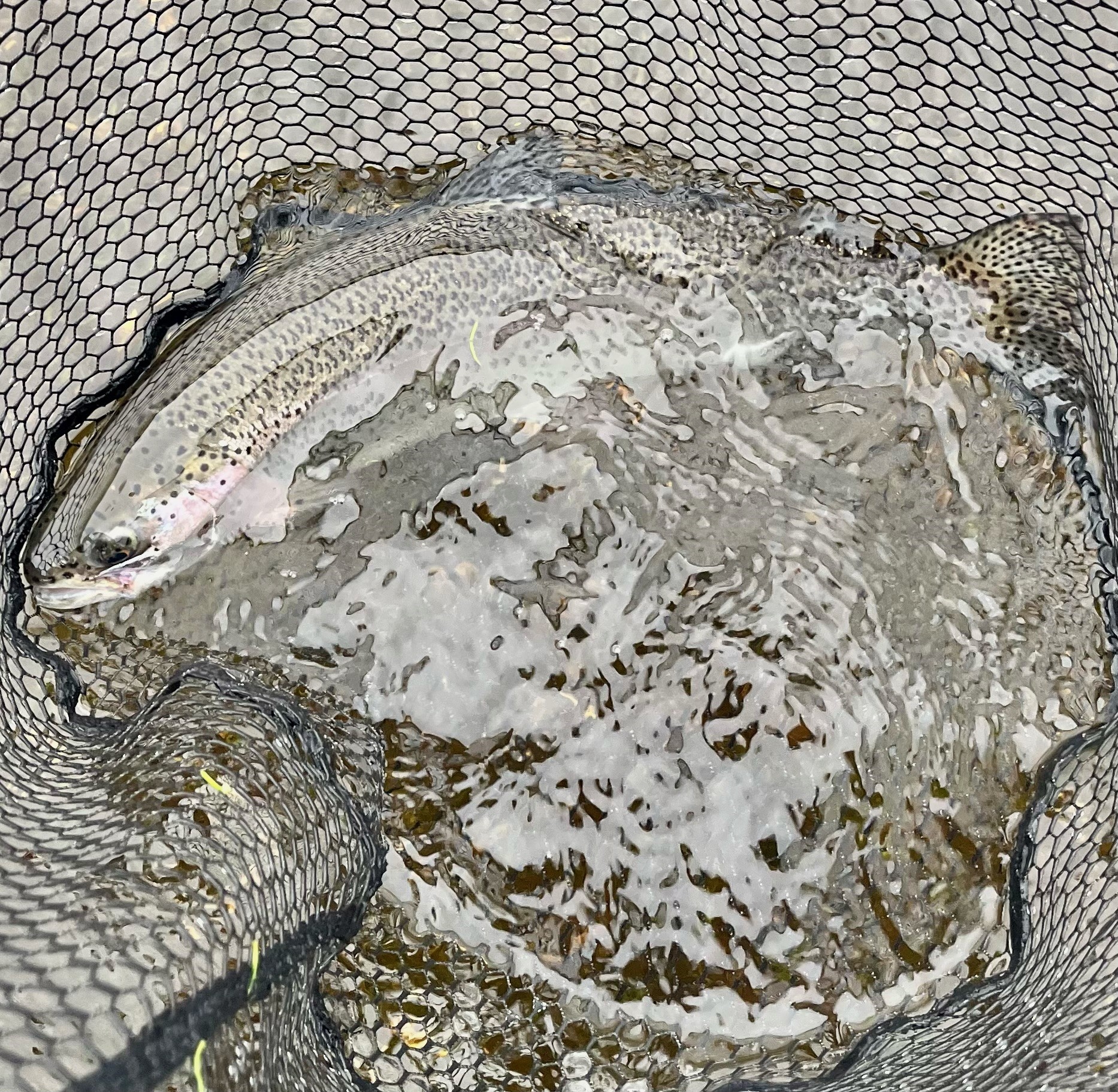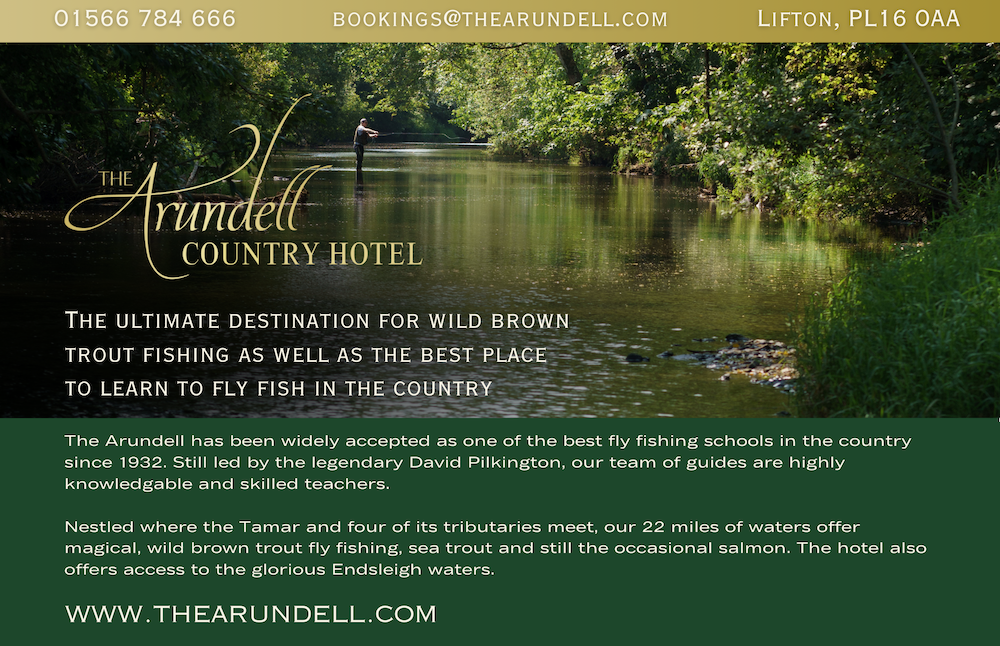
November 2024
Plenty of rain and cooler air temperatures meant that the lakes continued to fill, with levels now between 80 and 90% capacity at the rainbow fisheries; while there have been a few hatches of midges and sedges, the fish have generally tended to stay and feed in deeper water. The Trust’s brown trout waters are now closed for the season, but the rainbow fisheries will stay open and stocked until the end of the year.
Fishing:
Kennick – The lake continued to fish well over the month, with rod averages of 3.3 fish per visit. Fish have been well spread around the lake, with Clampitts Bay, Oak Tree Point, Poplar Bay and the East Bank fishing particularly well, while boat anglers caught well fishing the deeper water in the middle of the lake. Generally, a slow or medium retrieve worked well, with flies fished at depths of three feet down to the bottom. Successful patterns included Damsels, Boobies, Nomads, Blobs, Tadpoles and Montanas. Barry Taylor (from Totnes) and his boat partner caught ten rainbows to 2lb 4oz, and while there were a few fish showing on the surface, all of their fish were caught on Montanas fished at depth. David Hocking caught his best rainbow ever from Kennick (as well as the best fish caught at Kennick this season) – a beautiful fish of 4lb 8oz as part of a bag of eight fish, while fishing from a boat at the entrance to The Narrows using a home-tied Blood Red Shimmy Worm on a floating line at a depth of around ten feet. On a subsequent visit he caught a bag of ten rainbows, mostly at depth on Hot Orange patterns.
Siblyback – The fish at Siblyback tended to stay and feed nearer the surface, with a few taking Foam Daddies (orange) and Hoppers, and anglers continued to use floating or intermediate lines, even when fishing sunk patterns (either nymphs such as Montanas, Damsels, Buzzers, or lures such as Baby Dolls, Fry patterns and Orange Fritz). Two Meadows, Stocky Bay and Crylla proved to be the most popular locations, with anglers averaging around a fish per visit. Ron Wilday (from Liskeard) caught three rainbows to 2lb, using Black and Peacock droppers and a Gold Fritz on the point, fishing at Crylla Bay and Two Meadows.


Burrator – Back Bay, Longstone, Pigs Trough and Bennett’s proved to be the best banks to fish over the month, with anglers averaging 2.6 rainbows per visit. The fish tended to move to deeper water as the month progressed, with more anglers catching on sinking or intermediate lines in the latter weeks. A variety of retrieval methods all caught fish – sometimes a slow figure-of-eight, other times a fast stripped retrieve. Foam Daddies and Black Sparkle Hoppers caught most of the rising fish, while subsurface feeders took Black Buzzers, Hares Ears, Damsels and Orange Hothead nymphs, as well as Orange Fritz and Dancer patterns (Hothead Yellow and White, or plain Yellow). Allan Lawson (from Plymouth) caught three “pristine rainbows that all went airborne before coming to the net” at Bennett’s, while Gordon McLeod (from Tavistock) caught ten fish to just over 3lb in one session.
Stithians – Water levels are still only at 58% capacity, but continue to rise. The fishing became more challenging as the month progressed, with weekly returns falling from one fish per visit to just under one fish per two visits. Floating lines continued to be the method of choice, with Goonlaze, Chapel Bay, Pipe Bay and Sluice Bank the most popular locations. Rising fish could be taken on Parachute Hares Ears, Black Gnats, Brown Sedges and Black Hoppers, while sub-surface feeders took Montanas, Black Buzzers, Gold Nomads and small orange lure patterns.
Please see the Trust’s website (www.swlakestrust.org.uk/trout-fishing) for more information on buying tickets, boat availability, booking, and end of season dates.
Chris Hall (November 2024)


